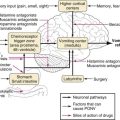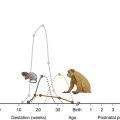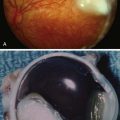Mammography has long been a crucial tool in the early detection and treatment of breast cancer. As technology continues to evolve, so too does the approach to patient care during these procedures. One innovation that stands out is the development of the mammography chair. This seemingly simple piece of equipment has revolutionized the way mammograms are conducted, bringing both comfort and improved accuracy to patients during a typically stressful process.
Why a Mammography Chair Matters
A mammography chair is specifically designed to provide stability and comfort for women undergoing breast cancer screening. Traditional mammograms are often conducted with the patient standing, which can be uncomfortable or even painful for some individuals, particularly those with mobility issues, disabilities, or chronic pain. By offering a seated alternative, mammography chairs make the screening process more accessible and less intimidating. This is particularly important for elderly patients and those who may struggle to maintain the necessary positioning required for an accurate mammogram.
The importance of a mammography chair lies in its ability to help radiologists obtain clearer and more consistent images. When a patient is seated comfortably, they are less likely to shift or move, ensuring that the breast tissue is positioned correctly for imaging. This leads to more accurate results, reducing the likelihood of needing repeat scans and improving the overall effectiveness of the screening process. Mammography chairs help alleviate the stress associated with the procedure, which can also lead to better patient outcomes.
Mammography chairs provide a more stable and comfortable environment, allowing patients to remain calm throughout the screening process. The VELA Mammography Chair is designed with patient-centered features, offering both ergonomic support and enhanced accessibility, which further improves the overall experience and accuracy of the procedure.
Enhancing Accessibility for All Patients
Accessibility is a key issue in healthcare, and mammography chairs have been instrumental in making breast cancer screening more inclusive. For many women, standing for the duration of the mammogram can be physically challenging, whether due to age, disability, or other health conditions. A mammography chair provides the support needed for these individuals to undergo the procedure with greater ease.
This has broader implications for the healthcare industry. Making mammography more accessible to women with disabilities or those who are older or frail can lead to earlier detection of breast cancer in populations that may have previously avoided screening due to discomfort or difficulty standing. This shift in approach aligns with a larger movement in healthcare toward personalized and patient-centered care, where equipment like the mammography chair is tailored to meet individual needs.
Innovations in Mammography Technology and Comfort
The mammography chair is part of a larger wave of innovation aimed at improving the patient experience during breast cancer screenings. Many modern mammography chairs are adjustable, allowing for different seating positions based on the patient’s height and body type. This adaptability not only makes the procedure more comfortable but also allows technicians to capture images from multiple angles with greater precision.
Some chairs are even equipped with advanced features, such as electronic controls that allow the technician to make adjustments without disrupting the patient’s position. This minimizes the need for patients to reposition themselves during the exam, reducing the discomfort often associated with mammograms.
The focus on comfort is particularly important, as it can help reduce the anxiety that many women feel when undergoing breast cancer screening. By ensuring that the patient is as comfortable as possible, mammography chairs contribute to a calmer, more relaxed environment, which can, in turn, improve the accuracy of the images captured.
The Role of Mammography Chairs in Improving Diagnostic Accuracy
The relationship between patient comfort and diagnostic accuracy cannot be overstated. When a patient is uncomfortable or in pain, they may involuntarily move or tense up, which can affect the quality of the mammogram. Mammography chairs mitigate this issue by providing a stable, supportive surface that allows for better positioning of the breast tissue.
In fact, some studies suggest that the use of a mammography chair can lead to a higher rate of early detection because of the enhanced image clarity it provides. With improved positioning comes a clearer view of the breast tissue, allowing radiologists to detect smaller abnormalities that might have otherwise been missed in a traditional standing mammogram.
Mammography chairs are particularly beneficial for women who have had previous breast surgeries or conditions that make traditional mammography painful or difficult. These chairs allow for a more controlled and precise imaging process, which is crucial for women with unique medical histories that require extra care during screening.
Shaping the Future of Mammography
As healthcare continues to evolve, innovations like the mammography chair will play an increasingly important role in shaping the future of breast cancer detection. As more clinics and hospitals adopt this technology, it will likely become the standard in mammography practices worldwide.
Looking ahead, the combination of advanced imaging techniques and patient-centered design promises to further enhance the effectiveness of breast cancer screening. The mammography chair is a prime example of how a seemingly small adjustment can have a significant impact on both patient comfort and diagnostic outcomes.
This evolution in breast cancer screening underscores the importance of continually reassessing how medical procedures are performed, not just from a technological standpoint but also from the perspective of patient care and experience. As innovations like the mammography chair become more widespread, women everywhere will benefit from a more comfortable, accurate, and accessible mammography process.





